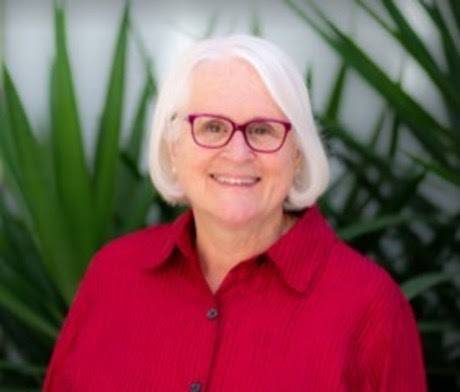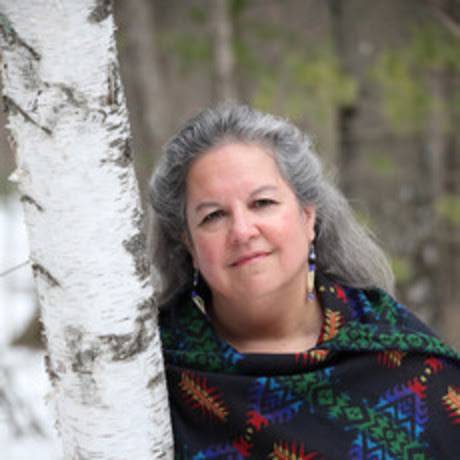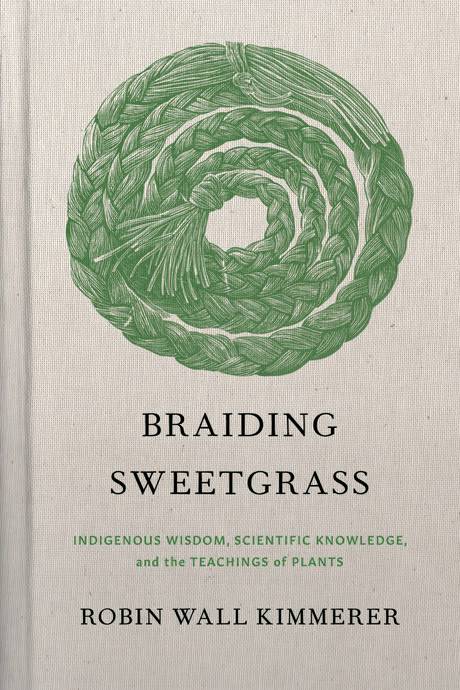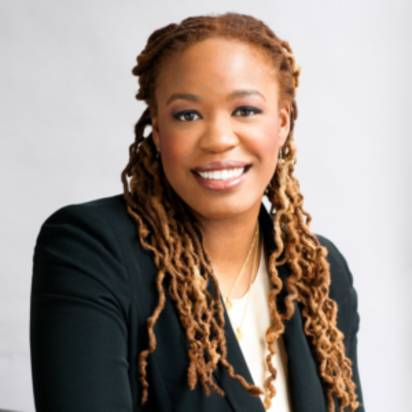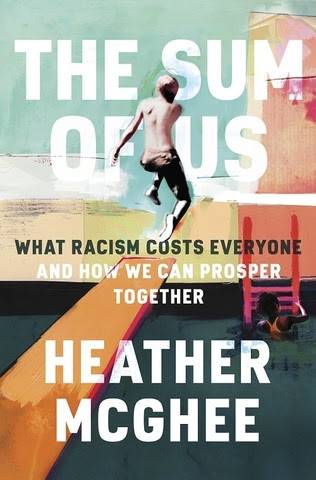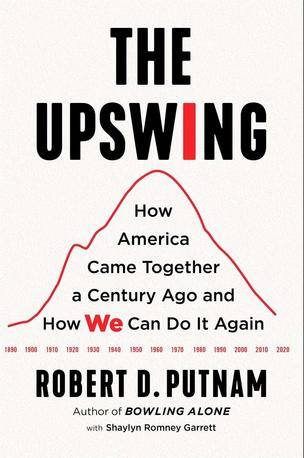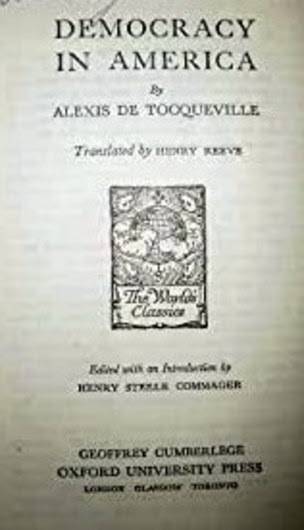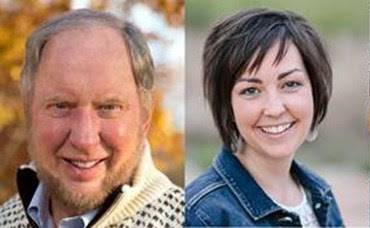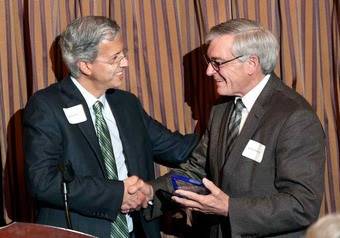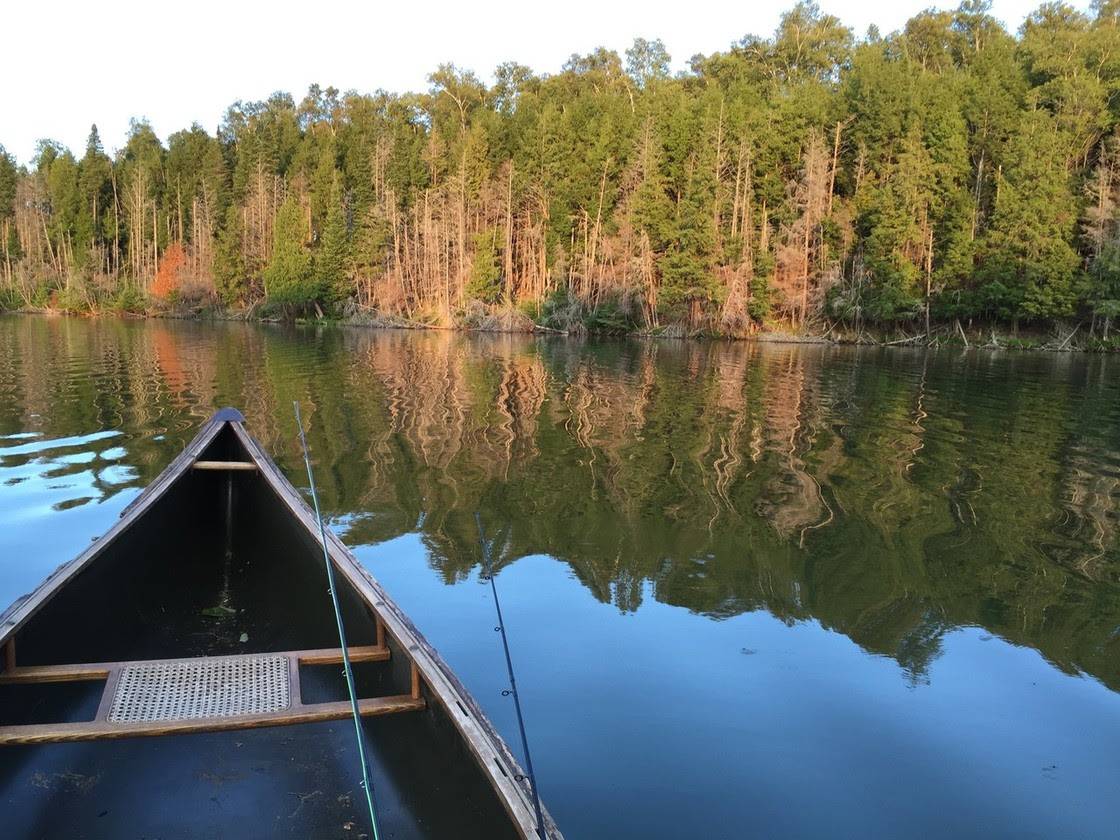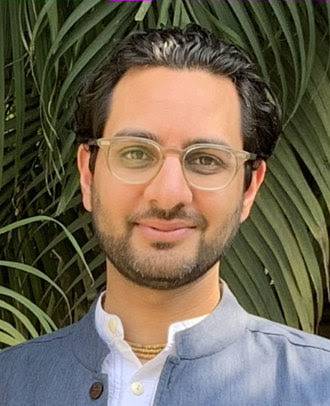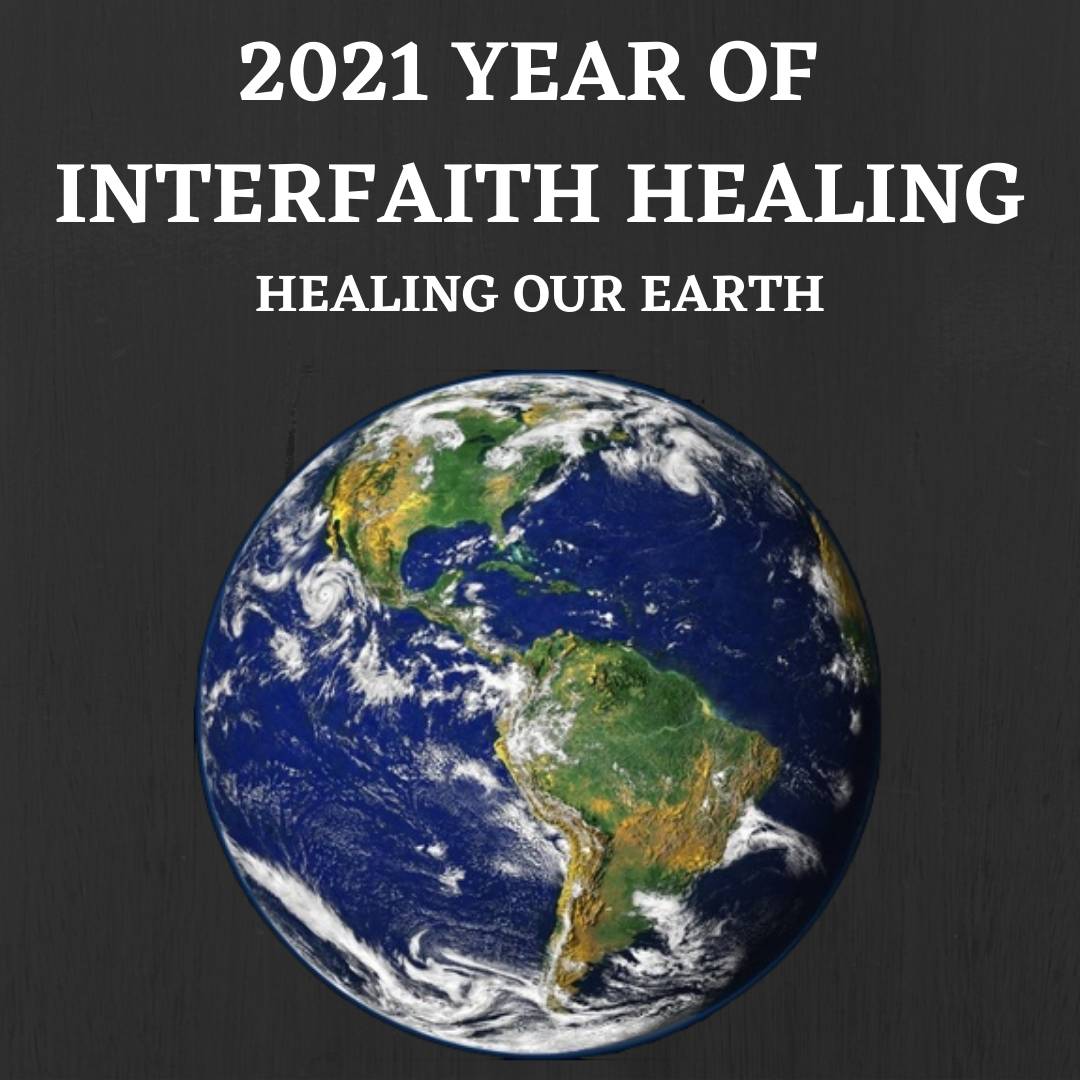Interfaith Insight - 2021
Permanent link for "Less focus on control as we seek influence and reciprocity" by Doug Kindschi on June 1, 2021
“He was a man who took God so seriously that he did not need to take himself seriously at all.”
This is how Rabbi Jonathan Sacks described his friend David, a pediatrician, religious Jew, humble, and dedicated to making a better world. Sacks also told of the occasion when David invited Sister Helen to his son’s bar mitzvah. Sister Helen asked what she should wear, to which he responded, “Come in your habit. God will enjoy that.”
Sacks, as regular readers of the Interfaith Insight will likely recognize, has had a significant impact on my own thinking as I engage in interfaith efforts. He was the chief rabbi for his Orthodox community in the United Kingdom, author of many books, articles, and videos. His death at age 72 in November 2020, following a cancer diagnosis just the month before, came as a shock to everyone around the world who had learned so much from him.
As we launched the 2021 Year of Interfaith Healing, I returned to Sacks’ book published 15 years ago, in 2005, “To Heal a Fractured World: The Ethics of Responsibility.” One of the chapters addresses the Jewish concept tikkun olam, to repair or heal the world. In that chapter he recounts the story from anthropologist Loren Eisley’s book, “The Star Thrower.” It is about a young person on the beach picking up starfish that have been stranded by the retreating tide and tossing them back in the water. An observer says to him, “Don’t you know there are thousands of starfish on the beach, and you can hardly make a difference?” The young person looks at the starfish in his hand, throws it safely into the waves, and responds, “To this one it makes a difference.”
Healing or repairing the world does not happen all at once or by a single person or single movement. But each act can either help in that effort or make the situation worse. It is the challenge for each of us to act with responsibility. Sacks writes, “Where what I do meets what needs to be done – there is God’s challenge and our task.”
Sacks speaks to us today not only through his previous books, articles, and videos, but also in his weekly “parsha” or Torah portion that he wrote prior to his death, that is currently distributed each week on the website maintained by the Office of Jonathan Sacks. Last week’s parsha titled “Power or Influence?” reflects on Moses’ leadership as he led his people out of Egypt. During the 40 years in the wilderness following the Exodus, he often had to exercise both decision power and leadership through influence. Sacks contrasts the power of a king with the influence of a prophet and notes that Moses played both roles.
When the power of a king is challenged, for example in a coup d’état, it is resisted with force. There can be only one king per generation else the kingdom divides, as was the case following the death of King Solomon when the kingdom was divided. When power is divided it is diminished. Sacks observes that the power of a king ends when the king dies.
Moses as prophet exhibits influence. There can be more than one prophet at the same time and their influence is often greater after their death. Sacks writes, “Power works by division, influence by multiplication. Power, in other words, is a zero-sum game: the more you share, the less you have. Influence is not like this. … When it comes to leadership-as-influence, the more we share the more we have.”
As I read Rabbi Sacks’ parsha and his earlier book, I was reminded of another one of the themes for our Year of Interfaith Healing, namely, the environmental theme of Healing Our Earth. This past week the Wege Foundation sponsored an online talk by Dr. Robin Kimmerer, scientist and member of the Potawatomi Nation who, along with the Odawa and Ojibwe people, formed the Council of the Three Fires, original to this part of Michigan. Over 2,000 people registered for Kimmerer’s inspiring talk, “Healing Relationships with the Natural World.” It is now available through June 11 at https://wegespeakerseries.com/.
Kimmerer challenged us to see the earth through two eyes: the eye of science but also the eye of the traditional values of the indigenous peoples. The gifts of the earth are not resources to be used up, but as our home for which we should be thinking in terms of relationship. The history of dealing with the environment has been one of power and control, but she inspires us to see our natural world in terms of reciprocity.
“What does the earth require of us?” she asks, not just what can we take from the earth. It is another version of living with a win-win approach rather than a zero-sum approach where what we take diminishes the earth, our home. Just as Sacks calls for healing through influence rather than control, Kimmerer calls for living with the earth in ways that humans, animals, plants, water, and earth all benefit and are sustained.
Whether it is our relationship to the earth or our relationships with each other, we must act in ways that lead to win-win. It is not a competition where another’s gain is our loss.
Sacks concludes: “Not all of us have power, but we all have influence. That is why we can each be leaders. The most important forms of leadership come not with position, title, or robes of office, not with prestige and power, but with the willingness to work with others to achieve what we cannot do alone; to speak, to listen, to teach, to learn, to treat other people’s views with respect even if they disagree with us, to explain patiently and cogently why we believe what we believe and why we do what we do; to encourage others, praise their best endeavors and challenge them to do better still.”
Whether it is our approach to the environment or our getting along with those who may look, think, or believe differently from us, let us forgo control and strive for influence and reciprocity. Let’s make it a win-win for all.
Permanent link for "Opening our eyes in new ways to our natural world" by Mary Vandergoot on May 25, 2021
Introduction: I am pleased to introduce today’s guest columnist, Mary Vandergoot. She is a psychologist, author, and former faculty member at Calvin University, presently teaching in their prison program. Her second novel in the Maggie Barnes Trilogy series has just been published. Mary is a member of the Kaufman Institute book group, a fan of Robin Kimmerer, and will be leading the discussion of Kimmerer’s upcoming Wege Speaker Series lecture.
It’s spring in Michigan, that time of year when all around us what has been resting in the achromatic gray of winter bursts into color. Trees are leafing out in shades of green, redbud is adding color accents, the birds are symphonic, and honeysuckle is perfuming the air. It’s a perfect time for West Michigan to welcome Robin Wall Kimmerer. The Wege Foundation has invited her for the Annual Wege Speaker Series, and on May 27 she will be talking about “Healing Relationships with the Natural World.” In the following week, on June 2, the Kaufman Institute will host a group discussion of her lecture.
It is especially heartwarming that Robin Wall Kimmerer has roots in this region. She is a member of the Citizen Potawatomi Nation, whose peoples joined the Odawa and Ojibwe in the Council of the Three Fires that first gathered at Michilimackinac well over a millennium ago. From them we learned to call the lake that runs along our western shore “Lake Michigan,” and from them we inherited the name of our state.
Robin Wall Kimmerer is a nature writer whose “Braiding Sweetgrass” first appeared in its successful Milkweed edition in 2020. It is a book that warms a reader’s heart, and it gets passed along from hand to hand or with enthusiastic recommendations by those eager to share its stories. The subtitle is an accurate summary: “Indigenous Wisdom, Scientific Knowledge, and the Teachings of Plants.” The more common introduction by those recommending it to friends is: “This is really good stuff. Read it! You’ll like it.”
Kimmerer is a prominent voice in a new cohort of nature writers, committed to opening up the mysteries of life woven together from natural forms, living things, and the humans who live along with them. Like Kimmerer, many of these writers are scientists as well, but instead of inviting us into their labs or presenting us with statistical data, they invite us to look, to listen, and to give full attention to all around us. They tell us stories, and many of the stories Kimmerer tells are received from elders who have passed along generations of indigenous wisdom.
These writers are opening our eyes to ways we relate to the natural world. When we distance from it or view it with a cold eye, we are likely to perceive it as raw material available for our use. We subordinate it to our ulterior motives, many of which are shaped by profit motives. Something different happens when we observe with no other motive than to become familiar. Bodies of water and the intricate life systems around and in them are so much more than what we see when we open a faucet. Forest spaces shared by a panoply of life ranging from microscopic fungi to monumental cedars are so much more than sources of wood. Is it possible that the animals living all around us, sometimes hidden for their own safety but just as often because we don’t see them, are more aware of us than we are of them?
If we become familiar with the web of life into which we too are woven, we find it fascinating and beautiful. That is a first step. And then because we know it better and are becoming aware of how often we have neglected or damaged it, we conclude we should take care of it. There is another step, however, to which the new cohort of writers is pointing us. They are suggesting something more immersive. They are advising that we stop impeding nature and let it reveal to us its own potential for healing. Then if we harmonize ourselves with it and realize that we are part of it, we may begin to understand how much we need it. We may also discover that it needs us, but we will not know in what ways it needs us until we have lived with it in harmony and become familiar. This is a relational view of nature, a mindful and cooperative one.
Stories let us see our natural partners as participants rather than objects. They cooperate with each other and with us. Some of the stories being written by the new cohort of nature writers have been criticized for anthropomorphizing nature, for making animals and plants sound too much like us. Skeptics doubt that plants send messages, that fungi build communication networks, or that older trees intentionally protect their young even at a cost to themselves. We have been trained to see nature’s processes driven by competition in the struggle to survive. Cooperation among plants and animals sounds strange. The possible exception might be pets we take into our homes or working animals we domesticate. But trees in a forest? That for many is too far a stretch, until we are told a story that helps us observe them. When we are invited into a space of familiarity, our frame of reference changes.
Robin Wall Kimmerer has introduced us to the wisdom of plants. Canadian ecologist Suzanne Simard has alerted us to the “forest wide web” communication system of fungi living beneath the soil surface and serving the plants of the forest. German forester Peter Wohlleben has shown that the emotional lives of animals are far more elaborate and beautiful than we have been willing to acknowledge. The list is too long to mention here, but what is encouraging is that the list of those helping us reshape our relationship with nature is growing.
When we listen to the stories of those who are calling us to heal our relationships in the natural world, when we look around us and see things differently, we begin to see ourselves differently too. Robin Wall Kimmerer says it well in her book when she suggests that the stories are “medicine for our broken relationship to the earth, a pharmacopoeia of healing stories that allow us to imagine a different relationship, in which people and land are good medicine for each other.” It’s with delight that we anticipate her visit to West Michigan.
Permanent link for "Games, basketball, swimming pools, and interfaith" by Doug Kindschi on May 18, 2021
In games like basketball, there is a winner and a loser. Even in a
tournament, teams are pitted against each other so for every game
winner there is also a loser. Such win-loss games are called
“zero-sum” since the total number of wins balances the total losses so
the sum is zero. Games and game strategy have been the subject of
analysis for a few centuries, but in the mid-20th century it became an
established field of mathematics with applications in fields from
economics and political science to biology and philosophy. The
current usefulness of game theory and its prominence is recognized by
the more than 10 Nobel Prizes in Economics that have been awarded to
game theorists.
Zero-sum games were extensively studied in the earlier years and
compared to interactions where the winnings and losses of the players
do not add to zero. For me an obvious example is education. Every time
I taught a class, the knowledge of the students (hopefully) increased,
but my knowledge did not decrease an equal amount. My knowledge
actually increased as I explained something to another person.
Furthermore, each student’s advantage in learning is not dependent on
another student’s loss of learning. While there might be competition
among students for the top grade, all students can learn and win in
this educational interaction.
Even in activities like basketball, while the winnings and losses
might sum to zero, the activity of playing basketball viewed at the
larger level is not zero-sum. Even the losing team benefits from the
exercise, the comradery, the friendships developed, and the experience
of teamwork. It pays to look beyond the individual event and seek the
larger view to see the total benefit to a group or community.
Unfortunately, when we look at our history we can find major
examples of zero-sum thinking and behavior. Slavery was built on a
system where there was financial gain for the slave holder by having
slaves who had to work without pay. The owner’s “win” was balanced by
a corresponding “loss” on the part of the slave. The system was built
on “I win if you lose” thinking.
This kind of thinking has permeated, either consciously or
unconsciously, too much of our thinking long after the days of
slavery. Last week’s Insight introduced the work of Heather McGhee,
economics and public policy expert. She described the “drained pool
policy,” where earlier in the last century Southern communities
drained the public pools rather than allow them to be integrated. The
thinking was, if Blacks could win access to this public resource, then
certainly the white community would be the losers. Zero-sum thinking
prevailed, but the result was loss for everybody.
McGhee’s book, “The Sum of Us: What Racism Costs Everyone and How
We Can Prosper Together,” documents with story and data the way in
which this approach has historically deprived us all of the benefits
of working together in diversity.
To return to the basketball example, has that sport, or the
sports of football or baseball, suffered because Blacks are now
allowed to participate? How about in the arts, music, theater, and
film? Are we not all richer because of the diversity in these fields?
The progress and health of our economy, society, and life together
prospers when we take the larger view and move away from zero-sum thinking.
Draining the pool, or limiting participation to just certain
groups, while perhaps motivated by zero-sum thinking actually results
in a loss for everyone.
What does this have to do with interfaith?
Zero-sum thinking can also permeate our perspective
on religious interactions and practice. Rather than learning from
others who might believe differently, there is often a tendency to see
it as a zero-sum. If I’m right they have to be wrong. Why are we
sometimes so certain that God can’t work in the lives of others in
ways that my own religious tribe does not emphasize? We can be
confident in our own faith understanding and commitment and still be
humble about whether we know the fullness of God’s working in the world.
Immigration is also an issue where racism and interfaith interact
since people come to America with a multiplicity of faith commitments
and skin tones. Immigrants, especially those who are brown and
black, face the kind of discrimination that is based on zero-sum
thinking if we think their benefit must be at my expense. Multiple
studies have shown that immigrants and refugees have a significantly
lower crime rate and are much less likely to be involved in violent
activity. The vast majority leave their country to get away from
crime and violence.
The percentage of immigrants who become entrepreneurs and create
jobs for others is considerably higher than for native born
Americans. This should not be surprising. Since immigrants are not
satisfied with how things are, they are willing to take risks and to
work hard to achieve their goals. These are precisely the
characteristics of entrepreneurs who create new ventures and companies.
Rather than thinking that immigrants are benefiting at our
expense, we need to realize that this is not a win-lose situation. We
are all benefitting by their contributions; it’s a win-win. Likewise,
as we learn from the understanding and beliefs of someone different,
it leads to our own knowledge and even our commitment being enlarged
and enriched.
The business community has also learned that zero-sum thinking in
the short term often leads to negative outcome in the long term.
There might be short-range advantages to company profits if one keeps
wages very low, employee benefits minimal, and takes no responsibility
for environmental care or support for the community. But in the
long-term company morale can deteriorate, employees leave, and
government and community conflict hurt the company and its profits.
Considering the benefits for all can also enhance the benefits for the
owners.
The world’s major religions have all taught that we should care
for others, especially those in need. Short-term advantages do not pay
in the long run, and we have responsibilities that go far beyond our
own personal benefit. Our lives together are enriched by taking the
win-win approach. Let us heed this teaching as we build a better
community, benefiting all.
Permanent link for "Is it win-lose, or can we all grow together?" by Zahabia Ahmed-Usmani on May 11, 2021
Is it right to assume our children will have even more success than
we did? After all, they have so many privileges that we didn’t have.
As a first-time mother of a senior, I have just traversed the
college application process with my daughter. I am ashamed to say that
I fell into this mindset in all the ways that showed deep-seated
indoctrination from the greater American society and from my own
Pakistani immigrant background. Growing up, my brother and I saw our
parents’ hard work and knew that nothing less than our best would be
good enough. We worked hard and went to good colleges leading to
wonderful opportunities to serve our communities in our own unique
ways. When I had my own kids, I thought they would have more
opportunities than we had growing up. With hard work they would go to
even better colleges than we did because of the privilege, access, and
support they had received growing up.
This year, the college application process, like everything in
the world with COVID, was very different. Many institutions made
entrance exams optional, leading to the highest application rates ever
seen, and thus acceptance rates dropped significantly. For our family
this resulted in rejections from schools for which our daughter was
very confident. I found myself bewildered and insulted. Why was I
taking it personally? Because, I had bought into this idea that one
school was good and the other wasn’t.
But then I remembered the advice of a dear friend and a Muslim
sister as both of our kids were applying to colleges during COVID. She
said, what is meant to be for them will be theirs. They won’t get
something that was meant for someone else, and others will not receive
what was meant for them. The reminder of this Islamic teaching was
comforting and it shook me out of that zero-sum mentality I was
wallowing in. I began to question 18 years of thinking that had
tainted my outlook for so many years.
This personal example demonstrates the trap of the zero-sum
mentality that Heather McGhee talks about in her book “The Sum of Us:
What Racism Costs Everyone and How We Can Prosper Together.” In
diversity, equity and inclusion work I often hear it said that “we
need to make the pie bigger,” when helping people see the advantages
we all get from engaging in efforts of equity. The notion that equity
is a zero-sum proposition -- that for one person to gain another must
lose – stands in opposition to what the research and data tell us.
People fear that a dollar in someone else’s pocket is a dollar less in
my pocket. Or, in my example, admission for their kid means rejection
for mine.
McGhee addresses the notion of equity, and true social and
economic inclusion, which our country has resisted since its founding.
Our country was founded on a toxic narrative that, McGhee in a recent
interview said, “was invented to justify stolen land, people, and
labor.” In modern days this narrative has transformed into one which
now designates certain people as makers and others as takers,
taxpayers versus freeloaders, rather than as neighbors or fellow
citizens. She argues that the elite require this narrative to
perpetuate inequality that only benefits them. The zero-sum narrative
does not benefit the poor or working-class white person, the Black,
Indigenous or other person of color, nor does it benefit women, LGBTQ+
folks, or those with disabilities.
However, this successfully established implicit narrative in our
minds has justified the polarization in our society, resulting in
people working against their own best interests just to achieve gains
over “the other.” What McGhee argues is that racism and inequality
impact everyone, and that policies that seem to only harm one group
have more far-reaching repercussions.
A poignant example in the book is of the beautiful public
recreational complexes with pools in the South, where only white
families enjoyed comfort and relief from the heat prior to widespread
air conditioning. When the civil rights movement and legal rulings
required that all be admitted access to these pools since they were
funded by tax dollars, the cities made the choice to drain the pools
and fill them with dirt rather than integrate. They eliminated these
complexes as well as the park service departments, resulting in loss
of employment and loss of an important community resource. Racism
impacted everyone. This example of “drained pool politics” is not
uncommon in our U.S. policies and politics.
Heather McGee is an economist and social policy expert. After
years of tackling problems of inequality from the economic angle where
disparities are compared across groups, she came to realize the
missing root cause — racism. Rather than a variable that influenced
inequality, McGhee discovered it as the root cause of holding back
progress for all Americans. For example, 40% of white workers are not
making enough money to support their basic needs. Poverty wages impact
all people across the board, not just minorities. The narrative that
justice for people of color will come at the expense of white people
has historically kept workers from unifying for collective action.
However, McGhee documents how recent unified efforts have shown the
power people have if they work together.
As interfaith communities work together to seek justice, we must
critically examine these polarizing zero-sum narratives. Centering
race and racism in our conversations is a necessary paradigm shift
that aligns with many aspects of what we value or hold sacred. In my
own personal world example, I am reminded of where our pride comes
into play when we examine equity, access, and privilege in our
society. Are we missing the costs of racism permeating our society?
Through the stories of our American neighbors and with economic
analysis, McGhee guides us in her book to better understand how we are
stronger together. She calls us as a nation to get on the same page
about the truth of our past so that we can move forward into a future
together. This united movement will result in what McGhee calls
“solidarity dividends.” What if instead of looking at distribution of
goods, access, or privilege as a fixed, finite resource, we instead
imagine it as the sunshine?
Let us hold this image of the sunshine, something in plentiful
supply, even here in Michigan, that we can all appreciate, value, and
enjoy together, side-by-side, as serving “the sum of us.”
Permanent link for Can self-interest include a return to a we-centered culture? on May 4, 2021
“The principle of self-interest rightly understood appears to me the best suited of all philosophical theories to the wants of the men of our time. … Each American knows when to sacrifice some of his private interests to save the rest.”
So wrote French aristocrat Alexis de Tocqueville, who in the 1830s spent considerable time in America seeking to understand its character. His reflections were published in his book “Democracy in America.”
Self-interest is important. If we were not interested in our own well-being, we would probably perish. Without self-interest, would we build shelters, plant crops, build companies, save for the future? Without self-interest we would die. But self-interest can become selfishness, obsession with self, and hurtful to others. Tocqueville’s “principle of self-interest rightly understood” acknowledges both the importance of self-interest as well as the limits of only considering the self. Unbridled self-interest will, in fact, lead to destruction that undermines and destroys others, community, and then even the self.
The balance between the “I” and the “we” is the theme of the book, “The Upswing: How America Came Together a Century Ago and How We can Do It Again,” written by Robert Putnam and Shaylyn Garrett.
The authors analyze how in both politics and the economy, America went from political divisiveness and economic disparity at the beginning of the 20th century, to experience an upswing mid-century where there was more cooperation between political parties and more income equality. They refer to moving from an “I-centered” society to a more “we-centered” culture. They then document the decline of we-centeredness and return to the current self-centered culture with renewed income disparity and political polarization. (This was explored in more detail in last week’s Insight.)
Their analysis also includes the movement from isolation to solidarity and then back to isolation as reflected in today’s society. The late 19th and early 20th century, sometimes called the Gilded Age, was a period of movement from rural towns to larger cities, and the addition of large waves of immigrants. It was also a period of rapid growth of various civic institutions, clubs, lodges, and ethnic associations. National organizations with civic purpose were also founded like Red Cross, the Boy Scouts, and Rotary clubs. Joining such an organization expressed not only an interest in supporting certain causes and values, but also became an important part of social interaction and companionship. We became a nation of joiners, with membership in such associations reaching a high in the 1950s.
The second half of the century saw a dramatic participation decline in such organizations. It is another example of the pattern they describe as the “I-We-I” curve.
Looking at religious organizations and attendance, they observed the same pattern. The authors refer to religious institutions as having been “the single most important source of community connectedness and social solidarity in America. … Involvement in a faith community turns out to be a strong predictor of connection to the wider, secular world.” It predicts not only philanthropic giving to religious causes, but also to secular causes. Members of church communities are also three times more likely to belong to secular organizations like Rotary, Scouts, and neighborhood associations. As with other associations, church membership and religious attendance declined after the peak in the early 1960s. The authors write, “The Sixties represented a perfect storm for American institutions of all sorts – political, social, and religious.”
In Putnam and Garrett’s analysis of individualism vs. community they show a similar upswing during the first half of the century followed by the downswing to the earlier levels of hyper-individualism. They point to the relationship between the individual and community as a timeless dualism that appeared during the early 1600s, in the words of the poet John Donne who famously wrote, “No man is an island, entire of itself. … any man’s death diminishes me, because I am involved in mankind; and therefore never send to know for whom the bell tolls; it tolls for thee.”
The authors note the imagery of individualism and community in America’s history. In the frontier we have both the lone cowboy as well as the wagon train where settlers took care of each other as they headed West. Even in the midst of the Civil War, Abraham Lincoln in his second inaugural address urged for a united community following the war, “with malice toward none, with charity for all.” The individualism of Social Darwinism with its “survival of the fittest” gave way to a religious movement of caring for the least among us expressed in Jesus’ teaching to feed the hungry, visit the sick, care for the homeless.
That community spirit reached a high again in the 1960s as expressed by Martin Luther King, Jr. in his letter from the Birmingham jail that included the words, “We are caught in an inescapable network of mutuality, tied in a single garment of destiny.” That same decade, President John F. Kennedy echoed the sentiment in a speech saying, “The rights of every man are diminished when the rights of one man are threatened. …We are confronted primarily with a moral issue. It is as old as the scriptures and as clear as the American Constitution … whether we are going to treat our fellow American as we want to be treated.”
But also during the 1960s, the voices of Ayn Rand and others began a counter narrative. Rand’s novel “Atlas Shrugged” was said to be the most-read book of that century other than the Bible. Her book included such controversial but catchy statements as, “Nobody has ever given a reason why man should be his brother’s keeper,” and “Altruism is incompatible with freedom, with capitalism and with individual rights.” Her influence on a conservativism that had included solidarity and compassion led to what is now a “far-right” that is individualistic in character. Meanwhile, a similar move on the left led to a “far-left” message of the hippie slogan “If it feels good, do it.” It was an individualism of personal liberation. Responsibility faded while rights became the slogan on both sides. The “I-We-I” pattern again characterized this century.
Can the increased interest in diversity and inclusion be the beginning of a new moral sensitivity to see beyond a narrow self-interest so we can seek the common good? Let us affirm our various religious and cultural narratives as we work together to see our common values leading us to a new upswing toward a more we-centered culture.
Posted on Permanent link for Can self-interest include a return to a we-centered culture? on May 4, 2021.
Permanent link for "Finding hope in the midst of cultural division" by Doug Kindschi on April 27, 2021
“Are we destined to live with ever more divisive politics and ever
more divided societies, growing inequalities and increasing
loneliness, less public regard for truth and ever more determined
efforts to ban and demonize the voices with which we disagree?” So
asked the late Rabbi Jonathan Sacks, former Chief Rabbi for the United
Kingdom, in his last book “Morality: Restoring the Common Good in
Divided Times.” Published in the United States in 2020 just prior to
his untimely death, Sacks calls for a renewed morality in our public
life.
A similar call and hopeful message come from the recent book,
“The Upswing: How America Came Together a Century Ago and How We Can
Do It Again.” Authors Robert Putnam, research professor at Harvard,
and Shaylyn Garrett, writer and social entrepreneur, analyze the
economic, political, social, and political trends throughout the last
century leading to the increased inequality and polarization of our
current time. We have been here before, in the early 1900s, in what is
referred to as the Gilded Age, but came out of that to a more
egalitarian and cooperative society in what they call “the upswing.”
Putnam’s vast sociological research documents that movement and
together the authors analyze how that upswing developed -- and why it
can happen again.
A very stimulating summary of their work, along with questions
from the current and three former presidents of GVSU, was recently
presented in the one-hour Presidential Roundtable. (Watch at: www.bit.ly/GVSU-presidents.) Putnam presents a
graph starting in the early 1900s with very low levels of political
collaboration, which then gave way to much increased collaboration
mid-century during the Eisenhower presidency. That’s when the
political parties cooperated to desegregate the armed forces, expand
Social Security coverage, add more public housing, and promote better
health care and education. There was cooperation on a massive
investment in infrastructure with the interstate highway system as the
hallmark. A Republican president along with a Democratic Congress
worked together for a country that was rebuilding following World War
II. That kind of cooperation then fades through the last half of the
century with conflict and division around Vietnam, Watergate, and
budget battles leading to government shutdowns. Putnam describes
today’s polarization as back to the low point of the early 20th
century and even worse.
Economic production and income during the 1900s, on average, grew
in remarkable ways when adjusting for inflation. In the early part of
the century, however, there was great disparity, with 1% of the
population holding nearly one-half of all the wealth in contrast to
the large number of immigrants who were struggling to survive. This
disparity diminished in the mid-century with financial regulation,
progressive tax rates, increased union membership, and expansion of
public welfare programs. But again, in the latter half of the century
economic disparity increased to levels like that of the early 1900s.
Similar patterns were found when the research looked at social
isolation and cultural self-centeredness. In each case they observed a
similar curve going from an I-centered society to a more we-centered
culture, but then returning to the current I-centered pattern. While
the pattern is instructive and the research impressive, what I found
most enlightening was their analysis of the leading indicators for the
“upswing” to the more collaborative spirit of the mid-century.
They looked for hints from the earlier upswing from the more
selfish era, to more cooperation and concern for the larger welfare of
society that marked the mid-century. What could we learn that would
help us seek another upswing in our social and cultural life together?
Two factors are identified by the authors as critical to the
beginning of the change. First was an increased concern for others,
especially for the less fortunate. This movement, sometimes referred
to as the “social gospel,” brought religious groups together with a
focus not so much on their differing beliefs, but on the common
commitment to love your neighbor.
Is it possible that we are observing a similar moral awakening
when persons of different religious, or no religion, are coming
together in efforts to right the wrongs that have been done in the
environment, or correct the racial disparity in how minorities are
treated by the police or by others who carry ill will toward those who
look or believe differently? Is the interfaith movement our current
moral effort to live out our common religious principles or deeply
felt values to care for those in need? Can the attitude of
understanding and accepting those of different faith commitments
become a new morality that seeks the common good in this era of
difference and fear?
The second observation of what led to the upswing last century
was the important leadership by the young. They realized that while
they had not created the problems, they could act to change society.
It was a vision that society doesn’t need to be based on a
competition, but on cooperation to help all thrive. The youth of today
have lived through the decline of solidarity and cooperation, and have
a right to be cynical, but Putnam pointedly stated to the youth,
“people just like you turned America around… It’s not your fault but
you have it in your power to change it.”
Garrett noted that this is the most diverse generation in
America’s history, and it sees the necessity to affirm and accept all
members of our society. She challenged the youth to do the “heart
work” which is also “hard work,” to set a new course for our society.
We are becoming a nation of minorities. Can we extend the
American dream of democracy to truly include and accept that diversity
as we address the difficult issues in our society?
Look at the diversity in age and race in the Black Lives Matter
movement. Look at the role of young people like Greta Thunberg in
calling the world leaders to account for the damage done to the planet
that her generation will inherit. Look at Malala Yousafzai, the young
Pakistani girl who was deliberately shot in the head because of her
outspoken defense of education for girls. Following her recovery, she
continued her campaign and became, at age 17, the youngest person to
ever receive the Nobel Peace Prize.
Look at Amanda Gorman, who inspired the nation in her poem
delivered at the Inauguration. In our own community, look at Hannah
Huggett, a high school student in Holland, Michigan, who is an
environmental activist, leader of her local chapter of the Sunshine
Movement, and an inspiring panelist at our recent Healing Our Earth webinar.
Youth are stepping up to the cause; they are asserting their
agency to change what is not right and work for a better society and a
healthier world. Can we all, no matter our generation, join them in
finding hope for a better world?
Permanent link for "Reflections on Earth Day 50 plus 1" by George Heartwell on April 20, 2021
“I was learning from the water; I was praying with the water.” -- Waasekom Niim
With Gabe, my then 12-year-old grandson, I glided across the mirror surface of Crooked Lake in the Sylvania Wilderness of Michigan’s western UP. We had broken camp just as the sun was rising, packed our gear in the Old Town canoe, and pulled out as daylight lit the far shore. The pair of bald eagles we had seen perched high in the towering white pine on the point last evening were back on watch this morning, perhaps looking for breakfast in the shallow water. No sound broke the morning stillness, no ripple troubled the lake surface save that of our paddles dipping into the water and our bow carving the glass that held the sky.
I asked of the water: “Will all this be here for Gabe’s grandchildren?”
The water whispered back, “It’s up to you.”
50 plus 1. That’s how many years ago the first Earth Day was observed. Climate change was not yet part of the vernacular, though it was recognized by a small cadre of climate scientists. Still, we knew – the world knew – even then, that Earth is fragile, its resources limited, its health threatened by toxic air emissions and water pollution.
50 plus 1. Are we better off today?
Species extinction, according to those scientists who map such things, exceeds 200 species per year, a rate of 1,000 times the natural extinction rate. That’s according to the World Wildlife Federation; which also notes other experts put the rate at 10 times these numbers. Climatologists give us not much more than a decade to stem the rate of climate warming before it reaches a “point of no return.” Non-point source pollution from agricultural run-off, municipal stormwater discharge, and faulty septic system backups are fouling the water of our rivers and lakes, stimulating growth of toxic algae and harming native plants, fish and waterfowl.
Still, I am hopeful.
Over 50+1 years, the ranks of the informed have swelled. We common folk understand environmental threats and restoration opportunities better now than on that first Earth Day. We are changing the way we live, changing the products we use, and changing our associations, in response to the cry of our ailing Earth. People are going to the streets to support the cause of the Earth. Legislators in all orders of government are hearing from constituents who are demanding good policy to protect the Earth. Children and youth are leading the way with action and projects to restore the Earth.
And in 50+1, local governments have recognized that Earth-care starts at home. Mayors and city councils all over the world are implementing strategic approaches to producing clean energy, protecting vulnerable waters, planting trees, and designing cities to accommodate cyclists and pedestrians. Grand Rapids has led the way in all these areas. In my closing days in local office, the United Nations credentialed me as a representative of U.S. mayors at the Paris climate conference, where I was encouraged by the presence of 600 Mayors from all nations of the world who were there to commit our communities to achieving the goals of the conference for climate protection. Grand Rapids has led the way in this arena, but we are surely not alone!
Further, I am encouraged by the dialogue taking place among people of goodwill with differing cultures, religions, and life experiences around questions of climate protection. I recently participated in a conference on Traditional Knowledge hosted by the International Joint Commission. The speakers and panelists were tribal and First Nations peoples of the U.S. and Canada, and the perspective they brought to ecological preservation was transformative for me. I heard a young woman of the Saugeen Nation refer to the relationship between humans and the rest of creation by saying “they are relatives, not resources.” She reminded us that Western knowledge – and even our language – creates hierarchies with humans at the top and everything else subordinate. In contrast, traditional knowledge refers to the interdependent web of life of which we are but a part.
All these things give me hope and inspire me, even in my “golden years,” to work harder to protect the environment.
That day Gabe and I paddled across Crooked Lake to a short portage to Mountain Lake. I had read that there was a stand of old-growth white pine on an island in Mountain Lake. I wanted to touch their massive trunks and look up into their spreading branches. But the first thing we saw as we touched the shore of the island was a leaning tree reaching out from the bank over the water. Gabe scampered up the trunk and jumped into the lake.
“Come on, Papa!”
All right… never too old!
Dripping wet, we walked into the cool of the old-growth pine forest. The ground was spongy soft from centuries’ accumulation of pine needles. The pine scent was intoxicating. Nothing else grew there in the dense shade from the spreading branches high above.
After stretching arms to barely touch fingertips around the base of a tree trunk, we lay down in the pine bed and just looked up at these giants.
“How old do you think they are, Papa?”
“I don’t know. Maybe 300, even 400, years.”
“When I have grandkids, I’m bringing them here. Do you think this tree will still be here?”
My voice caught in my throat. What could I tell him? That climate change with its new diseases and parasites, maybe even logging, could wipe this ancient grove from the face of the Earth? That the selfishness of me and my generation, our reckless disregard for nature, could destroy this treasury?
“Bring them here on Earth Day, Gabe, when they’re old enough to understand how precious this is. In the meantime, you and I have to do all we can to protect this tree.”
And the tree said, “Thank you.”
Posted on Permanent link for "Reflections on Earth Day 50 plus 1" by George Heartwell on April 20, 2021.
Permanent link for "Bringing multiple religious perspectives to the healing of our Earth" by Kyle Kooyers on April 13, 2021
At its core, interfaith cooperation implies a willingness to work together across differences of belief or worldview. That's no surprise. But equally as important is the maintenance of distinctiveness – what makes us different - even as we come together to undertake that work.
While it's wonderful to celebrate our "oneness" as we do food drives together, build houses together, support vulnerable populations together, and seek justice together, what really makes that work special is multiplicity of beliefs and imperatives that prompt us to those shared spaces and efforts. By wading into and honoring difference, the cooperation becomes even richer.
As one Hindu voice and recognized global leader in the religious environmental movement points out, this honoring of imperative and action is just as important in our collective work of healing our Earth.
Gopal Patel is the co-founder and director of Bhumi Global, a nonprofit organization that works to educate and mobilize Hindu communities globally for environmental action, and currently serves as an adviser on religion and sustainable development to the United Nations.
In his article, “Hindu Worldviews and the Religious-Environmental Movement,” co-authored with Mat McDermott, Patel makes clear that interfaith engagement is necessary to address environmental concerns, notably the climate crisis. Yet, he also names the difficulties of acknowledging and respecting the different beliefs and convictions that bring diverse peoples into multifaith spaces.
First and foremost, this involves having to navigate assumptions around language and theology that become another barrier to inclusion in the interfaith environmental movement. For Patel, as well as for others in the dharmic traditions, the entire world is seen as an interconnected natural system. This view is seen in contrast with more Western and Abrahamic views that tend to see the world in terms of contrasts, even of good versus evil.
He relates an event in Rome for multifaith environmental leadership training that involved 100 faith leaders from all over the world. During a procession through central Rome, many posters and banners were displayed. One such banner said, “Fossil fuels are from hell. Solar power is from the heavens.” The Hindu participants were bothered by this severe dichotomy that did not recognize “that here are always shades of grey, that good and bad are only seen as such in accordance with time, place, and circumstance,” Patel writes. “Hindu theology does set up polarities in descriptions of particular actions — harming versus non-harming, ignorance versus insight, suffering versus non-suffering, for example — but these still are shades of grey conditioned by circumstance. The absoluteness of terms good and evil rarely if ever enter into a Hindu understanding of existence.” Likewise, the idea of an eternal heaven or hell is a Western Abrahamic concept that makes no sense in Hindu theology.
While efforts for addressing global environmental issues require global involvement from all religious traditions, it is also important to be aware of the differing concepts and theological ideas that are brought to the discussion and approaches to action. Patel describes it as a “yes, but…” translation of Abrahamic terms. He writes, we are “internally acknowledging our differences in worldview but choosing to not speak up out of recognition of a shared desire to see similar solutions implemented.”
For Patel, despite these hurdles, Hindus ought to enter the hard work of pluralism and dialogue, remaining true to the beliefs and imperatives of their tradition while also conveying to non-Hindus the relevance of those worldview convictions as they are incredibly valuable to the work.
He writes, "As humans start to come to terms with how our contemporary lives overburden our shared planet, Hinduism (standing alongside Buddhism, Jainism, and Sikhism) offers ways of understanding the interrelationship of all life, comprehending our place in the cosmos in a way that is uniquely suited to our current predicament, as well as guidance on how we each might live with more compassion for our fellow creatures."
When it comes to catalyzing action, Hinduism offers compelling imperatives for engaging in environmental work. Patel writes of his tradition, "Its emphasis on the interrelationship of all beings operating within a natural order, individualized paths combined with a focus on community and the common good, the pluralism of practice, and the ideal of minimizing the harm of one’s actions are exactly the messages the world needs to hear if we are to rise to the task of transforming our global society into one living within the ecological limits of Earth.”
Speaking to the Abrahamic traditions, Gopal Patel exhorts them to hold space for Hindu voices and views. Even in the context of the Western world, where Abrahamic traditions are in the majority, Hindus can offer differing views that enrich and augment the environmental conversation and work.
Gopal Patel will be featured at the upcoming Grand Dialogue in Science and Religion: Healing Our Earth. He will join other multifaith leaders in a discussion on “Interfaith Imperatives for Climate Action.” This event will be held virtually at 2 p.m. on Sunday, April 18.
The webinar will explore how faith or values from various traditions prompt action towards addressing our climate crisis, offering two dialogue panels in which individuals share with one another motivations and approaches for this necessary work. Panelists will offer wisdom out of their traditions and work around climate change with strategies for solidarity, adaptation, and mitigation. We will hear voices from the Hindu, Jewish, Muslim, Buddhist, Native American, secular, and Christian traditions.
Recognizing that we all come from very different traditions, communities, and experiences, may we strive to respect the distinctiveness of our worldviews and convictions, even as we enter the urgent work of seeking healing for our Earth together.
Permanent link for "Facing Environmental & Climate Challenges through the lens of Buddhism" by Kimberly Hillebrand on April 6, 2021
Kimberly Hillebrand joined the Kaufman Interfaith Institute in October 2019 with more than 20 years of nonprofit work in development and program management. She is an ordained Buddhist Dharma Teacher (Ven. Ai Su) at the Grand Rapids Buddhist Temple, with 20-years practice in metta meditation (loving kindness). Thanks to a collaboration with the Fetzer Institute, Kim is working to support and expand interfaith programming in the southwest Michigan area.
Environmental degradation and climate change were not a concern in
the Buddha’s lifetime 2,500 years ago. He did understand that
communities could be detrimentally affected by the practices of his
followers, so he gave instructions that nuns and monks should never
relieve themselves in or near running water, as that practice could
affect the quality of the water downstream. The Buddha also cautioned
nuns and monks to not damage habitats or kill any living being while
constructing new housing.
Nowadays, with emerging
understanding about the science of climate change, and real-time
examples of how our planet is declining in health due to human-driven
actions, there has been a renewed effort on the part of teachers from
all branches of Buddhism to integrate Buddhist teachings into
practically addressing the environmental and climate challenges we
face today.
Following are several foundational teachings
that may shed some light on how to face environmental and climate
challenges through the lens of Buddhism:
The Four Noble Truths:
The Four Noble
Truths were the first teaching the Buddha offered after he attained
enlightenment underneath the Bodhi tree. This teaching deals
primarily with suffering and the relief from suffering. The Four
Noble Truths are the truth of suffering, the truth of the cause of
suffering, the truth of the end of suffering, and the truth of the
path that leads out of suffering. The Noble Eightfold Path is a part
of the fourth Noble Truth and offers eight practices that lead to a
relief of suffering. One practice is “right mindfulness,” which
suggests that if you are mindful of the effects of your thoughts,
words, and actions in the world, you can avoid causing harm to living
beings and the planet.
In “The Four Truths of Climate Change,” Ven. Bhikkhu Bodhi, Dr. David
Tetsuun Loy, and Dr. John Stanley wrote, “The four noble truths
provide a framework for diagnosing our current situation and
formulating appropriate guidelines – because the threats and disasters
we face (related to climate change) ultimately stem from the human
mind, and therefore require profound changes within our minds. If
personal suffering stems from craving and ignorance—from the three
poisons of greed, ill will, and delusion—the same applies to the
suffering that afflicts us on a collective scale. Our ecological
emergency is a larger version of the perennial human predicament.”
The Five Moral Precepts:
The Five Moral Precepts are guidelines related to
abstaining from killing living beings, stealing, sexual misconduct,
lying, and intoxication. Related to the environmental and climate
crisis we face, the first two precepts are most applicable.
The first precept speaks to the choices we make about the foods we
consume, the items we buy, the energy we use, and the destruction of
land for new infrastructure that can cause extreme loss of life and
biodiversity within our planet’s ecosystems. Buddhists are encouraged
to embody metta (loving kindness) and compassion to all living beings
and to treat them equally, without exception. This first precept is
related to ‘ahimsa,’ which means to do no harm.
The second
precept is related to stealing, which could mean the taking of
anything from a physical item, an idea, or even stealing someone’s
peace of mind. Within the context of environmental destruction and
the climate crisis, destroying the natural habitats of living beings
is taking away something that does not belong to us. Further, the
actions we take, or our inaction, will steal the opportunity of future
generations to live in healthy communities, with clean land, air, and
water, and to enjoy Earth’s natural beauty. By not acting mindlessly,
or selfishly, we can protect the environment from destruction and
exploitation and stem the tide of human-caused climate change for the
benefit of our children and grandchildren and beyond.
Karma and Interconnectedness:
The word
“karma” means “action” in Sanskrit. It is an energy that is created
by our every thought, word, and action. We all create karma every
second, and this karma affects us and all others every second. For
this reason, Buddhists believe that it is possible to change what
happens in the future based on changing our thoughts, words, and deeds
in the present. Nothing is written in stone.
Paired with
karma, the interconnectedness of all things is an important
consideration within the climate crisis conversation.
Interconnectedness means that all living beings, including our planet,
are inextricably interconnected in a way that is impossible to
separate. Our thoughts, words, and actions within this web of
interconnection cause ripples (or karma) that will be felt far into
the future. Doing harm to one part of this whole is the same as
harming all of it.
In conclusion, humanity must act on the root causes of the environmental and climate crisis, which is driven by greed, thoughtlessness and indifference. Collective change begins with individual transformation. And in order to effect the kind of change that will alter our collective trajectory as it relates to the climate crisis and the destruction of our environment, we must first transform our own greed, ill will (or indifference), and delusions into compassion, harmony, and love for all living beings.
“When we harm the earth, we harm ourselves,” according to Sister Chan
Khong, of the Plum Village International Community of Engaged
Buddhists. “The earth is not just our environment. The earth is our
mother. We are all children of the earth, and we must help one another
as brothers and sisters of one big planetary family. We must take
action, not out of a sense of duty but out of love for our planet and
for each other. The Buddha has shown us that we can all live simply
and still be very happy.”
For those celebrating the Buddha’s birthday on April 8, or later
in the spring depending on your branch of Buddhism, may you be happy
and healthy!
Permanent link for "Religious holidays and Earth Day opportunities ahead" by Doug Kindschi on March 30, 2021
Important days are ahead, for religious holidays as well as
opportunities to focus on “healing our earth.”
Passover or Pesach began last Saturday evening with the
traditional Seder meal. This primarily family event is built around
telling the story of the exodus from slavery in Egypt to eventual
freedom in the promised land. Often forgotten is the 40 years of
wilderness that took place in-between.
This week for Christians, known as Holy Week, began with Palm
Sunday and continues with Maundy Thursday commemorating Jesus’
observance of the Passover meal with his disciples, known as the Last
Supper. Friday represents the day of Jesus’ Crucifixion and then
Sunday is the Easter celebration. The day in-between Good Friday and
Easter is Holy Saturday, the traditional end of Lent. Many traditions
barely recognize this day, but in some ways it mirrors the time in the
wilderness prior to the ancient Hebrews attaining freedom.
Muslims will soon begin the month of Ramadan, fasting from dawn
to dusk. It is a time of reflection and repentance, in some ways
similar to what Christians do during Lent. Ramadan begins on April 12
and goes to May 12, when that evening and the next day the feast of
Eid al-Fitr takes place. It is a festive celebration of breaking the
fast and brings families, friends, and communities together.
While the separate narratives are important, it is of interest to
note the similarities in the rhythm of these annual celebrations from
the various faith traditions.
Later this month, on April 22, is the 51st anniversary of Earth
Day, often referred to as the beginning of the modern environmental
movement. Our religious traditions have, however, stressed the
importance of caring for the creation in their sacred writings and
teachings for hundreds, even thousands, of years.
In recent years, this agreement among the religions is reflected
in the documents that came from a meeting in Assisi of
five faith traditions called together by Prince Phillip of the United
Kingdom. In 1986, representatives from Buddhism, Christianity,
Hinduism, Islam, and Judaism met to discuss how their faiths could
come together to help save the natural world. Out of their efforts,
the Alliance of Religions and Conservation was formed and other
traditions joined, each presenting their declarations relating their
teaching to the need to preserve the environment.
Jewish tradition and Scripture recognize the world as a creation
from God, and that it is good. Adam was created to tend the garden and
be steward of the earth. Psalm 24 affirms again “The earth is the
Lord’s and the fullness thereof.” Hence any act that damages our
earth and natural order is an offense against God’s creation.
In the Talmud one reads about Choni, a very pious man who was
walking near a field where an old man was planting a carob tree. He
inquired of the old man how long it would be until the tree would bear
fruit. The man responded that carob trees bear fruit only after 70
years. Choni then asked if he planned to eat the fruit from the tree,
to which the old man replied: "Just as my ancestors saw to it
that when I came into the world I found fruit trees that I could eat
from, so to I am making sure my descendants will have fruit trees
available when they come into the world."
Thus, Jewish teaching is that each generation must preserve the
earth so that future generations will have an environment that will
meet their needs and enable them to thrive.
Muslims believe that the natural resources of the earth are a
blessing from the creator and that they will be asked on the day of
judgment how they used, protected, and conserved these resources. As
khalifahs, or guardians, of the planet we have responsibility for its
care and preservation. The misuse of our resources is a corruption
which will destroy God’s creation for which we will be responsible.
The Qur’an says: “Corruption has appeared on land and sea. Because of
what people’s own hands have wrought, So that they may taste something
of what they have done; So that hopefully they will turn back.” (30:41)
The environment is a topic on which all Christians, from
progressive to evangelical, can and should agree. When asked about
care for the environment, Billy Graham in 2008 responded by praising
the churches and denominations that had urged their members to be more
active on environmental issues. He noted the dangers faced from
pollution and climate change. He wrote, “When we fail to see the world
as God’s creation, we will end up abusing it. Selfishness and greed
take over, and we end up not caring about the environment or the
problems we’re creating for future generations.”
More recently Dr. Katharine Hayhoe, a climate scientist and
active evangelical, has received acclaim for her scientific work as
well as for her speaking out about the importance of this issue. She
was featured earlier this year in Calvin University’s January Series
and her talk is available on their website. Her TED talk in 2018 is
also recommended and can be found at ted.com by searching for Katharine Hayhoe.
The Grand Dialogue in Science and Religion, a program of the
Kaufman Interfaith Institute, will be offering an upcoming series of
webinars and workshops on the topic “Healing Our Earth.” They begin
with webinars on Sunday afternoon, April 11 and 18, followed by
workshops on the days leading up to Earth Day on April 22. See the box
for further information and free registration.
Centuries ago, the rabbis told the story of two men in a rowboat
out in the water. One of them started to drill a hole in the floor of
the boat, saying it was his right to do so. The other pleaded for him
to stop since they were together in the rowboat and that hole would
make them both sink. The lesson is that we are all responsible for
what we do and its impact on others, both now and for future
generations. We are all passengers together on this rowboat called
planet Earth. We must safeguard the boat and row together.


